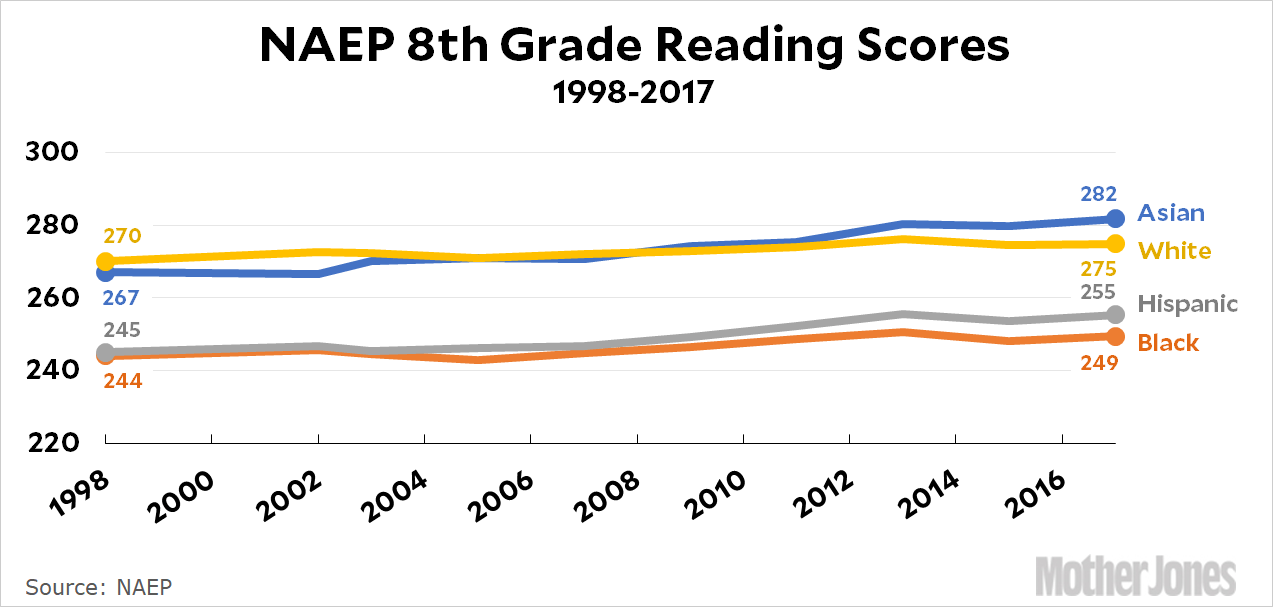My Twitter feed is glutted with Michael Cohen snark right now, and he is undoubtedly the most entertaining news of both today and the past week. But I don’t have anything nonobvious to say about him, so let’s talk about something else. Last week I promised to write again about the latest NAEP scores, and today Bob Somerby reminds me to do that. Bob and I may have a fraught relationship, but one thing we agree on is a tiredness over the knee-jerk narrative that interprets all test scores at all times as evidence that American schools are failing. So let’s take a look.
Over at the Atlantic, Natalie Wexler has a piece titled “Why American Students Haven’t Gotten Better at Reading in 20 Years.” Her theory is that it’s related to the way we teach reading, and I had it open in a tab over the weekend but eventually closed it because I don’t have any special knowledge of how best to teach reading. However, Bob points out that the first order of business is to see if it’s even true that American students have flatlined over the past 20 years, as Wexler claims. Here’s the NAEP data:

For those of you too lazy to do your own arithmetic, here’s the comparison between 1998 and 2017:
- Asian: +15 points
- White: +5 points
- Hispanic: +10 points
- Black: +5 points
There are a number of points you can make with this data, but one point you can’t make is that kids haven’t gotten better at reading.¹ Using the usual rule of thumb that 10 points equals one grade level, black and white kids have improved half a grade level; Hispanic kids have improved a full grade level; and Asian kids have improved 1½ grade levels.
That’s not too bad in the space of only 20 years, and it comes on top of similar improvements between 1975 and 1999. So here’s my question: how fast should reading scores be improving? For that matter, is there any special reason that reading scores should be improving at all? Poverty hasn’t changed much. Average incomes haven’t changed much. The phonics wars have been raging for decades, but I’m not sure that reading pedagogy has really changed very much down on the ground.
So why do we expect reading scores to be skyrocketing in the first place? Why do we almost universally refuse to acknowledge that scores are up at all, let alone up a fair amount? Why are we so determined to believe that kids in the past were better educated than kids today, even though the evidence says nothing of the sort? It is a mystery.²
¹And before anyone asks: if you restrict yourself to public schools only, the 20-year gains have actually been a little higher.
²The usual dodge at this point is to suddenly decide that NAEP scores don’t matter, and the only important thing is how our kids compare to kids in other countries. That, however, is an extremely tricky subject on a variety of levels, and it’s genuinely not clear what the limited data tells us. In any case, I’m not willing to even discuss this with anyone who lacks either the math skills or the intellectual honesty to first acknowledge the steady and significant score gains among American kids over the past few decades.

















